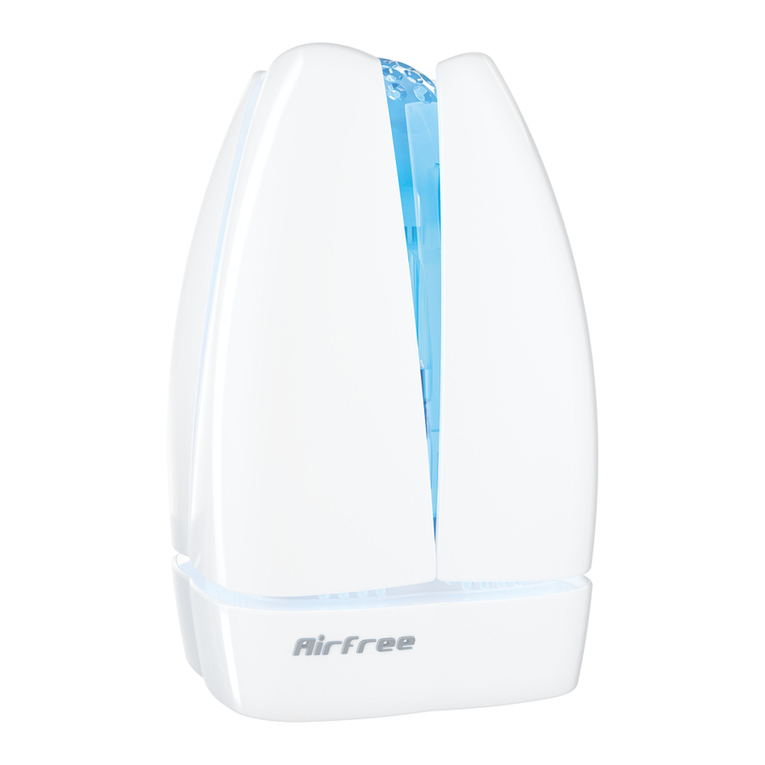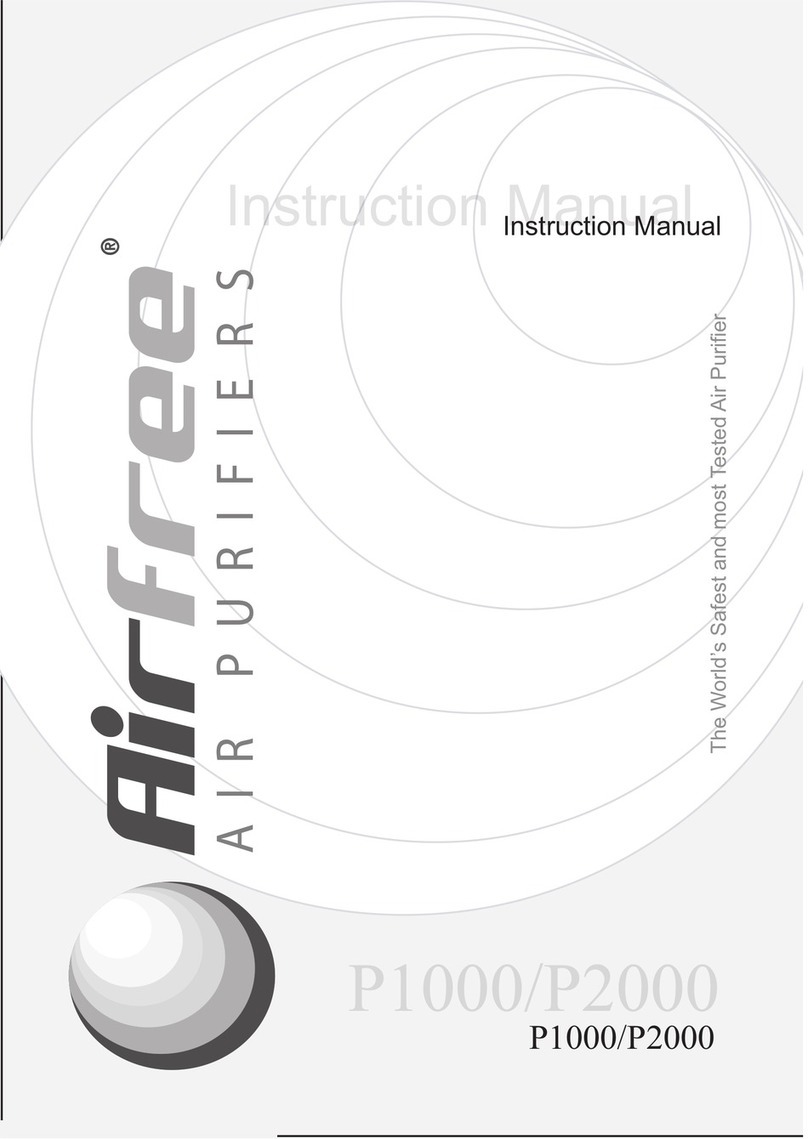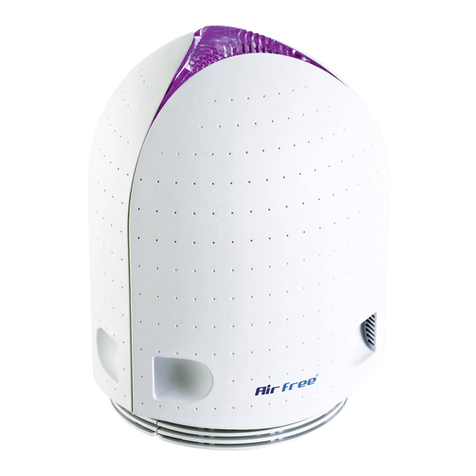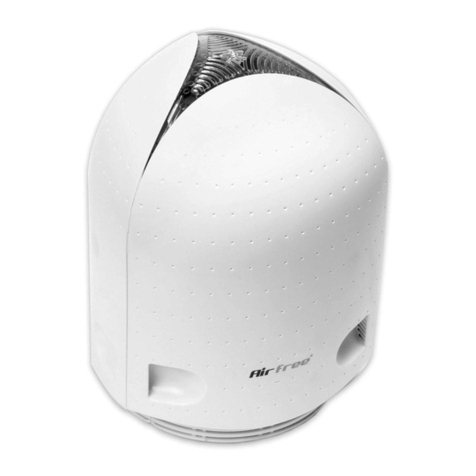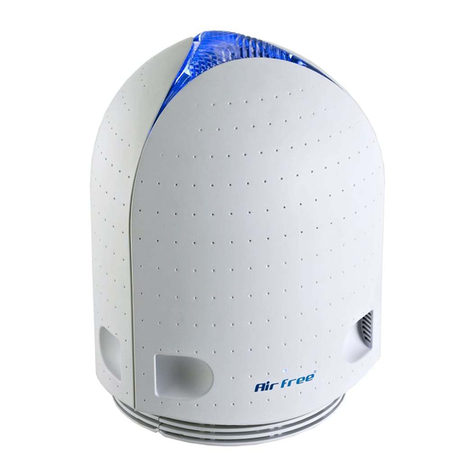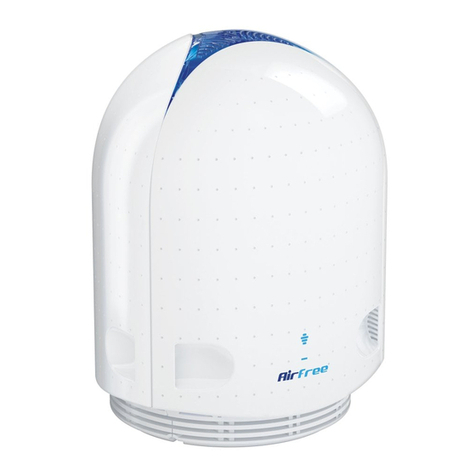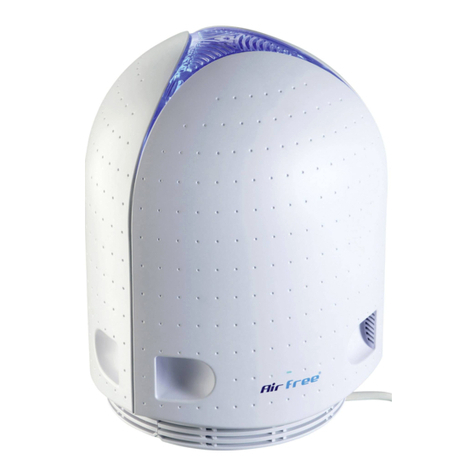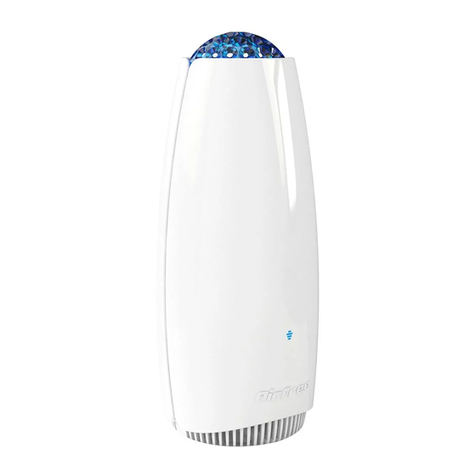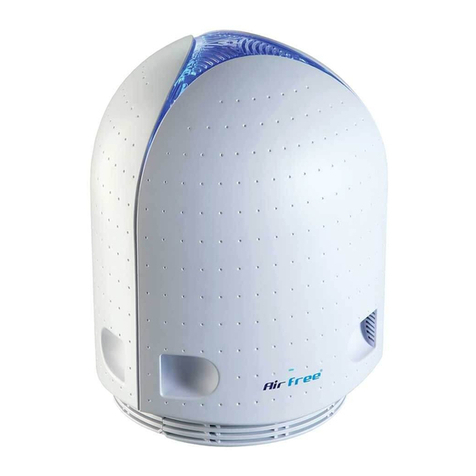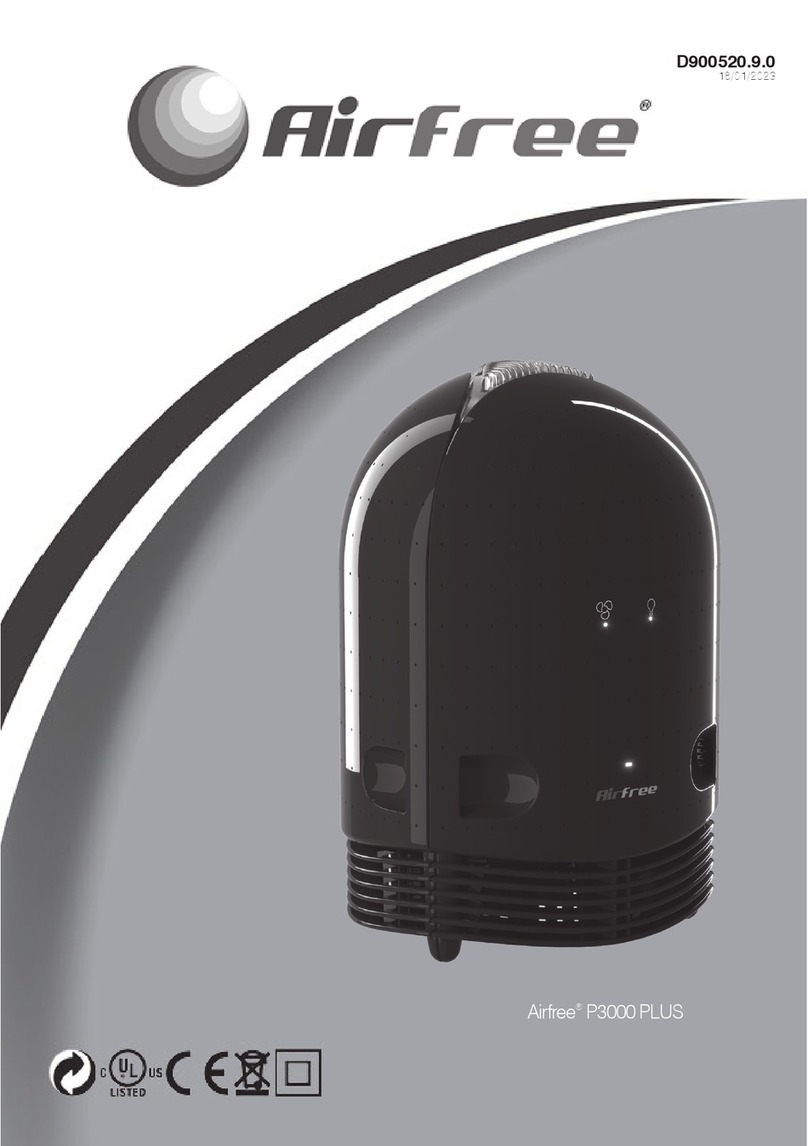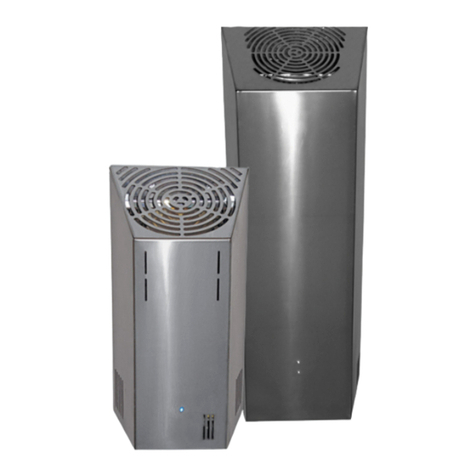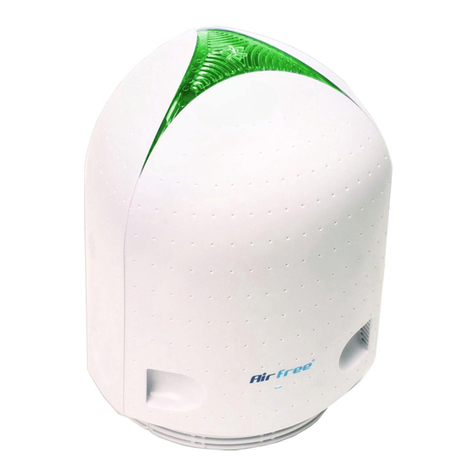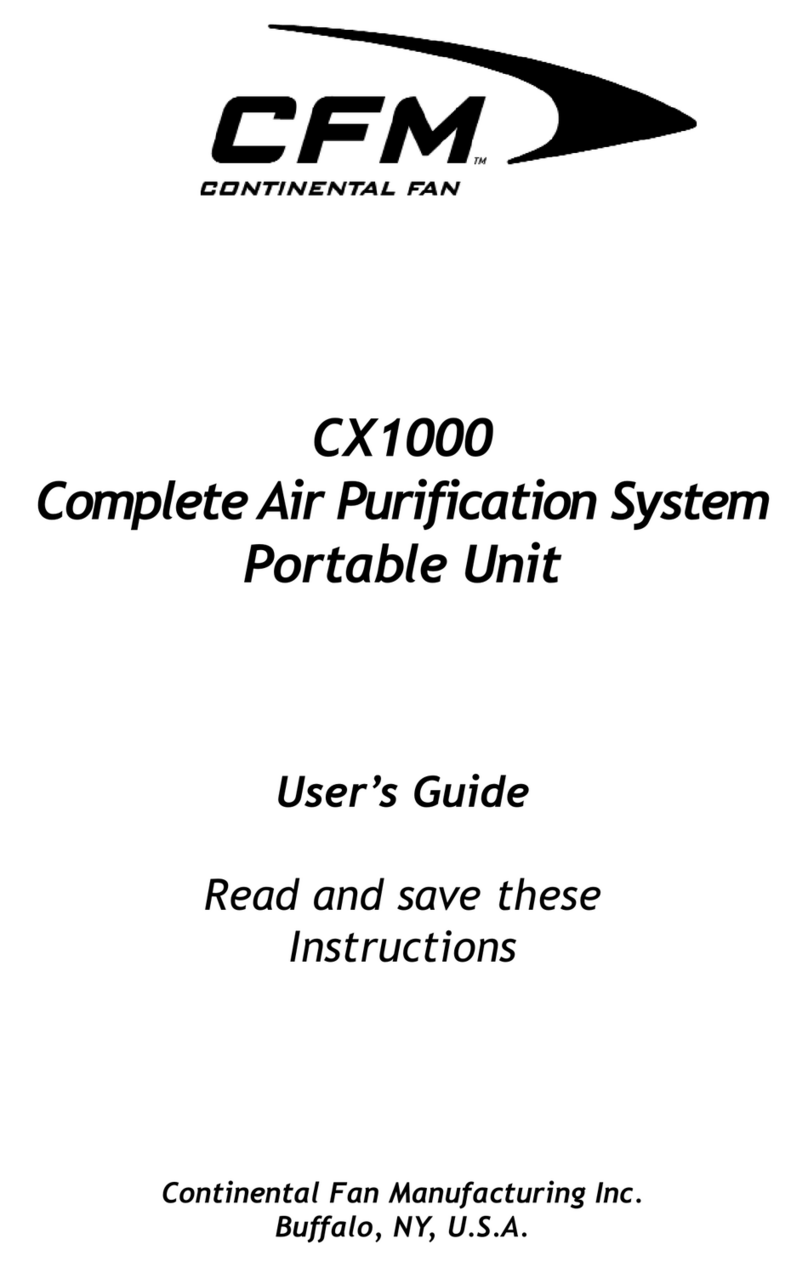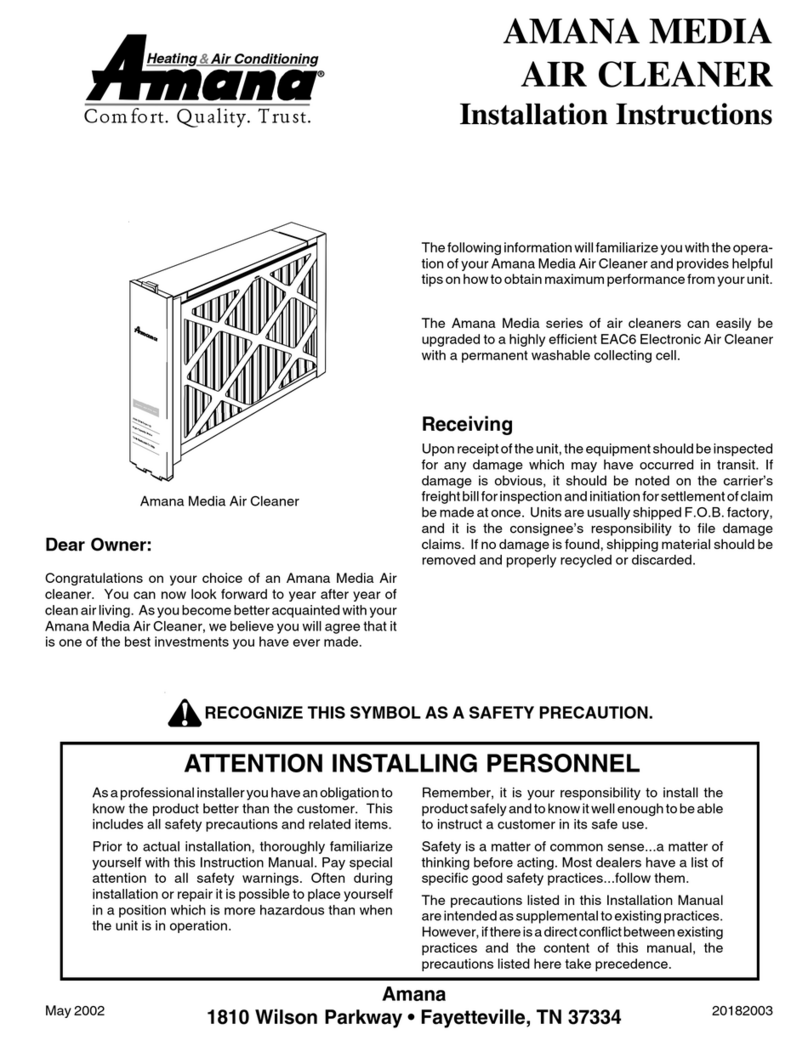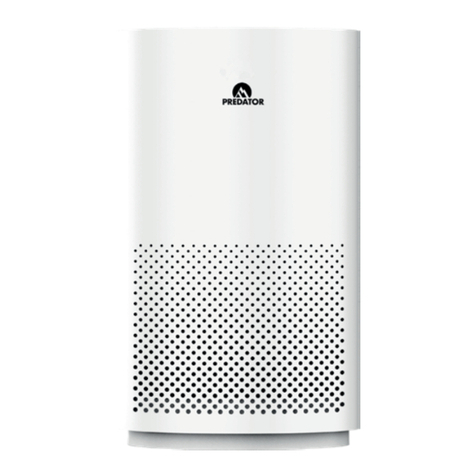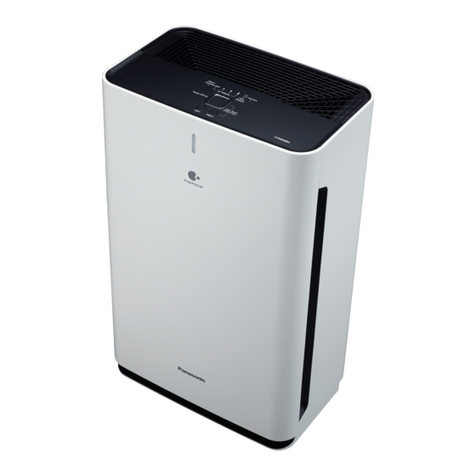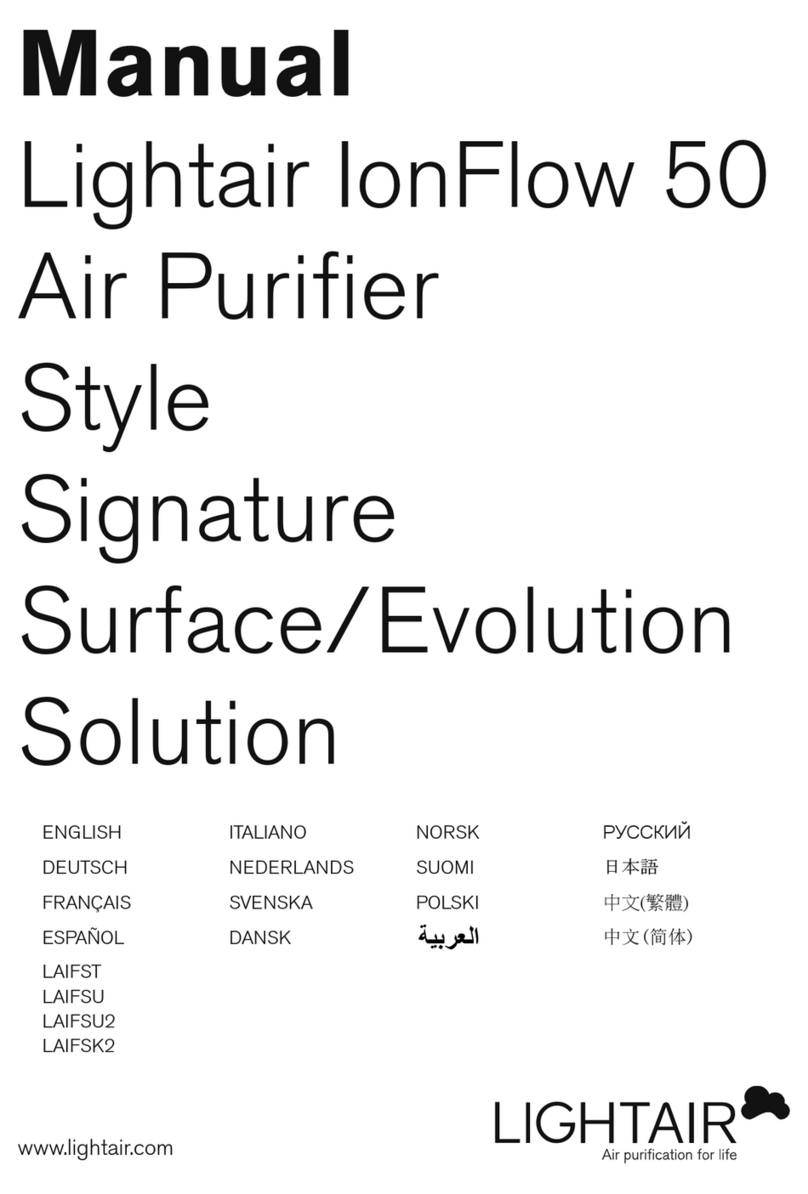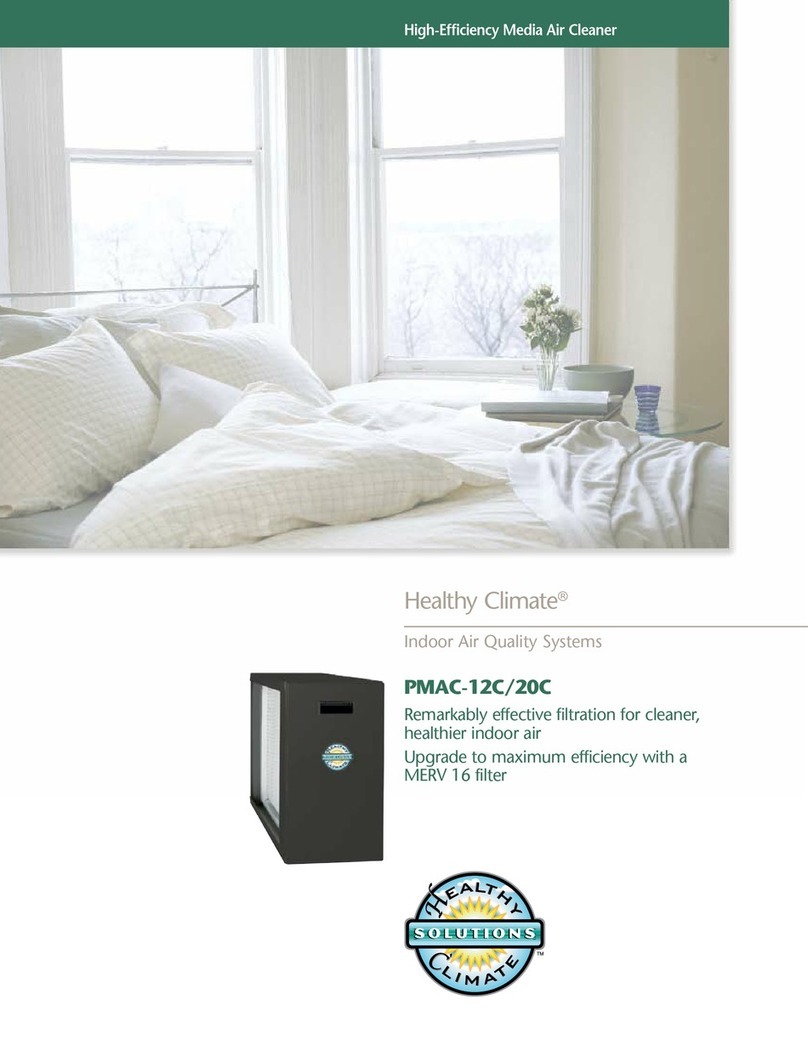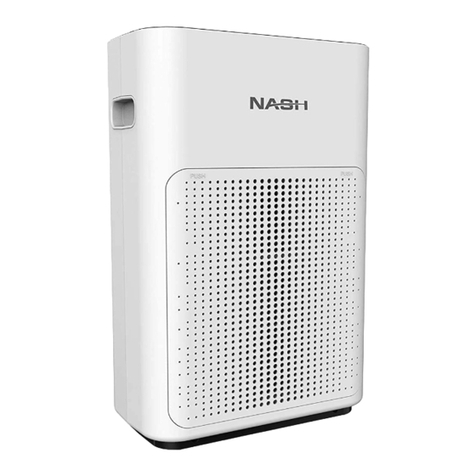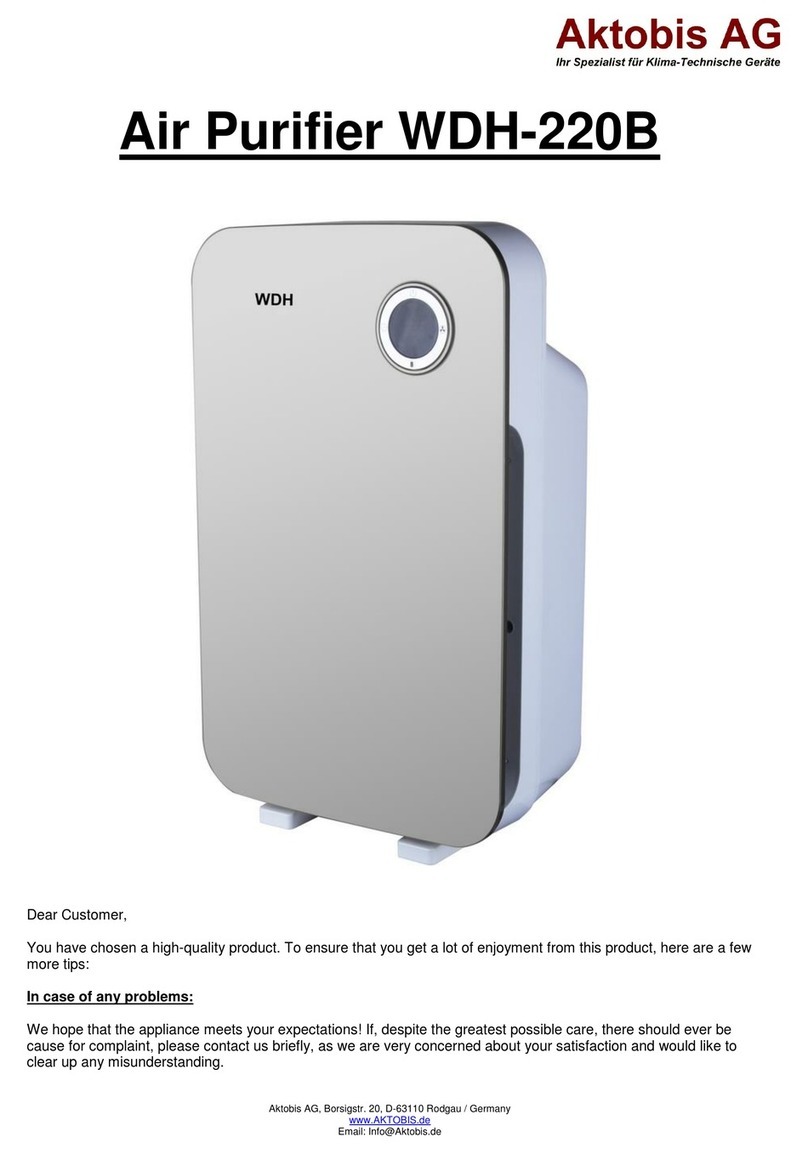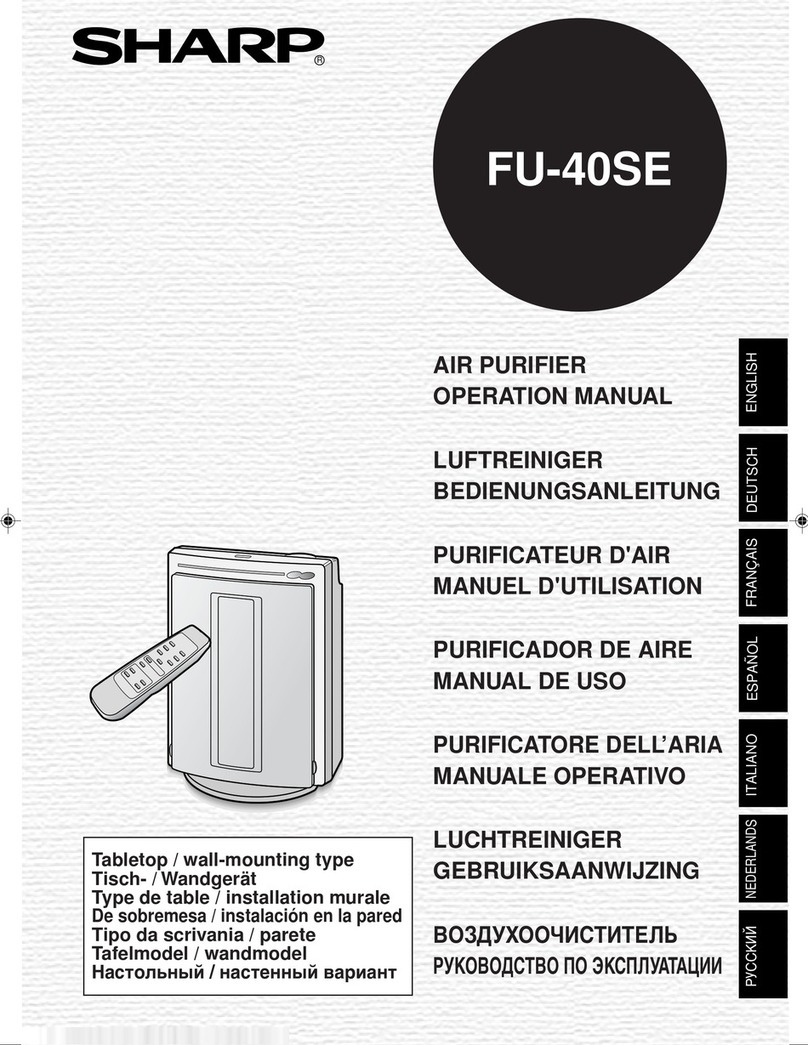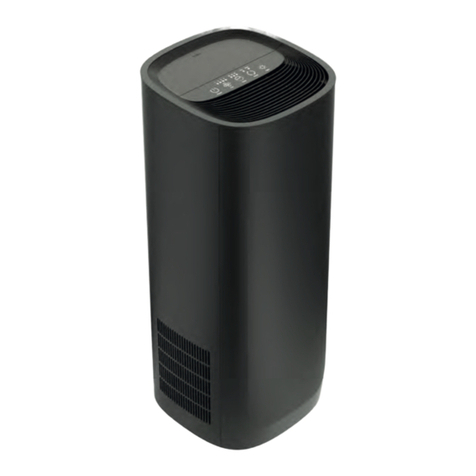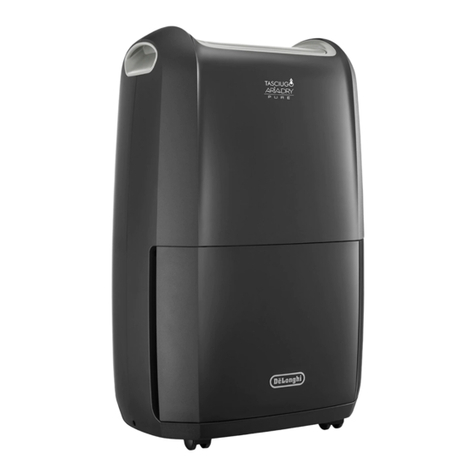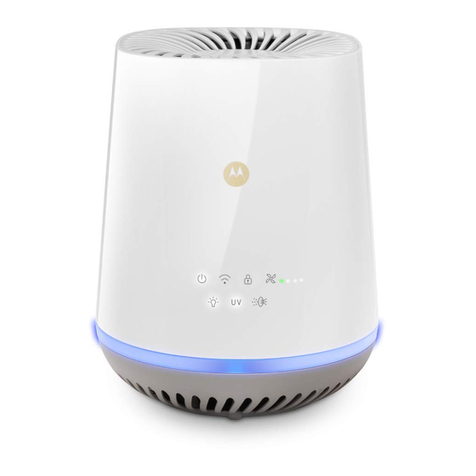
7
ENGLISH
5. Can I use Airfree®in air conditioned rooms?
Yes.
6. How do I know if Airfree®is no longer working?
Check the top lid. A cold top lid indicates the device is not working.
7. Can I place Airfree®in the corridor to reach adjacent rooms?
No. Airfree®will just reduce air pollution in the corridor’s area.
8. Can I place Airfree®in a closed room?
Yes. Please remember such a room must have at least 10 m³.
9. Can I change Airfree®from one room to another?
Airfree®must always be plugged in the same room 24 hours a day. Airfree®’s patented
technology works gradually and cannot have its cycle interrupted. Moving it from one room to
another will interrupt the cycle and the room will start being contaminated again.
10. Should I turn off Airfree®when I leave the house?
No. The TSSTM ceramic core must always be ON, whereas it’s probably not necessary for the
fan to be ON as well.
11. What happens if Airfree®is disconnected or there is a blackout?
Airfree®will take approximately the same time as before to achieve the previous reduced
contamination level as far as moulds, bacteria and viruses are concerned. When the fan’s
turned ON, the odour eliminator capsule will immediately start working.
12. Does CADR measure the effectiveness of the Airfree®?
Not at all. CADR is not designed to test the Airfree®’s technology. The AHAM seal (usually
found at the back of an air cleaner’s box) lists three Clean Air Delivery Rate (CADR) numbers:
one for tobacco smoke, one for pollen and one for dust. The CADR indicates the volume of
filtered air delivered by an air cleaner. The reason why CADR is not designed for Airfree®is
because Airfree®does not filter, but destroys microorganisms instead. Such a reduction of
bacteria, moulds, viruses and other microorganisms can only be measured after air sample
incubation in a microbiology lab. Airfree®destroys, rather than trapping or moving around,
any microorganism regardless of how small it might be; 99.99% of all microorganisms are
destroyed when passing through the Airfree®patented ceramic core mini ducts.
13. Does Airfree®eliminate bacteria and viruses?
Yes. Unlike other air filters in the market, Airfree®is more efficient with the smallest microorganisms
as they are easily carried by Airfree®’s airflow into the sterilising TSSTM ceramic core mini ducts,
where they are destroyed at high temperatures. Please check the independent bacteria and
virus tests at our website.
14. How does Airfree®destroy dust mites?
Mould reduction in the environment leads to a reduction of the mould-dependant dust mite
population. Airfree®also destroys the harmful toxins and fungus released into the air by dust
mite feaces and skeletons that trigger respiratory allergies and asthma.
15. How does Airfree®eliminate fungi and mould?
As mentioned before, Airfree®eliminates airborne microorganisms including moulds, fungi and
spores. By eliminating spores, new mould colonies are unlikely to develop, representing less
future airborne mould spores. Please check the independent mould tests at our website.
16. Does Airfree®reduce tobacco smell and smoke?
Yes.
















